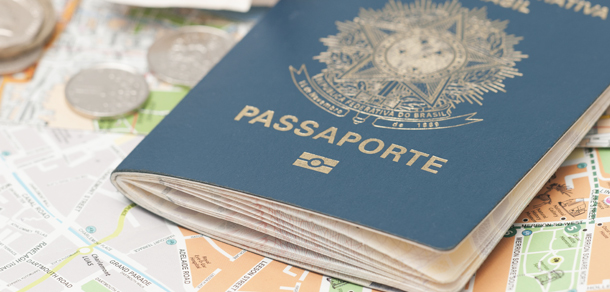E-Gates ease and secure international travel
Kiosks read passport, use biometrics to verify identity
18 December, 2016
category: Biometrics, Government, Transit
Air travel is on the rise, and airports around the world are looking for ways to streamline operations. The challenge is to meet this increase in traveler volume at a time when they’re also addressing heightened security concerns.
Automated e-gates and other technologies are proving key to this effort, enabling airports to move travelers through immigration checkpoints faster and with less manpower while maintaining a high level of security.
E-gates are a form of automated border control. Essentially, they are self-service barriers where passengers scan their chip-enabled e-passports and other travel documents. Travelers then undergo biometric verification using face, fingerprint, iris recognition or a combination of modalities. After the identification process is complete, a physical barrier such as a gate or turnstile opens to permit passage.
The idea is to automate cross-border movement of individuals who are of a low security concern and focus manpower resources at the border to manage people who are higher risk.
The number of e-gate units deployed globally is expected triple from 1,100 in 2013 to more than 3,200 in 2018, according to a 2014 report by Acuity Market Intelligence.
Most e-gates have been deployed in airports in Europe, Australia and Asia. They are especially prevalent in the United Kingdom, where most major airports have them. They have yet to gain a presence in U.S. airports.
Travel volume, security concerns
E-gates came about in the mid-2000s as an automated method of reading the newly mandated e-passports. Border control had become more heavily scrutinized following 9/11, and as a result the entire process slowed down as checkpoints became congested. The combination of rising security demands and a need to move people through airport checkpoints much rapidly created an opportunity for new technology solutions.
|
New spec adds digital visas, stamps to ePassports ePassports may be getting a major upgrade as countries will have the ability to add data to the contactless smart card chip. |
Biometric travel facilitator Vision-Box recognized the opportunity to automate the border-crossing process using emerging facial recognition technology.
Vision-Box deployed its first e-gate in 2007 for the border agencies of Portugal. The United Kingdom was the next country to deploy Vision Box e-gates, starting with Manchester Airport. All of those systems are still operational but have undergone several upgrades as technology matured.
To date, Vision-Box has installed 800 e-gates at more than 60 airports and some land border crossings. The company is responsible for more than 90% of the e-gates in operation in the EU and nearly 11% of global airport e-gates, according to Acuity.
“From the traveler perspective, e-gates streamline the airport experience, reduce lines and create a seamless experience where the passenger feels in control of the whole operation,” says Michael Petrov, Vision-Box managing director for North America.
Advantages of automation
Improved speed through automation and increased security through biometrics are the two primary advantages of e-gates.
Passenger throughput is crucial because most airports have a fixed amount of space available for border control officers, says Terry Hartmann, vice president of transportation for the U.S. and Canada for global IT firm Unisys. “If you can automate the process, then that’s faster than standing in a queue and being interviewed by an officer,” he says.
E-gates can relieve border control officers of simple administrative duties, such as stamping passports, and enable them to shift their attention to higher-risk travelers.
While it may appear that e-gates operate unattended, Petrov explains that there is always a border control officer involved. Typically one officer oversees six gates, and intervenes if issues or concerns arise.
Automated e-gates also help reduce errors from manual data entry. “The accuracy of face biometric matching at the e-gates exceeds that of a human operator, thus preventing document swapping between travelers,” Petrov says.
The automation of border crossings allows border control officials to know the whereabouts of travelers inside the airport. For example, this information could help airlines to hold off closing a flight knowing that a no-show passenger has already crossed immigration and will be at the boarding gate within minutes, Petrov explains.
For European airports, there’s also a revenue benefit to e-gates. Unlike U.S. airports, which are run by state and local governments, most airports in Europe are commercial ventures, meaning they compete to get travelers.
Petrov says these airports quickly realized that deploying e-gates would translate to more business. “The airports aim to make the travel experience more pleasant, cut lines, reduce the real estate occupied by waiting areas and increase the time people spend in airport shops and restaurants. E-gates address all those goals,” he says.
Australia has been adding more e-gates due to the program’s success. Vision-Box is deploying more than 100 e-gates at eight major airports throughout Australia. Since going live in December, Sydney now processes more than 90% of travelers via e-gates, Petrov says.





